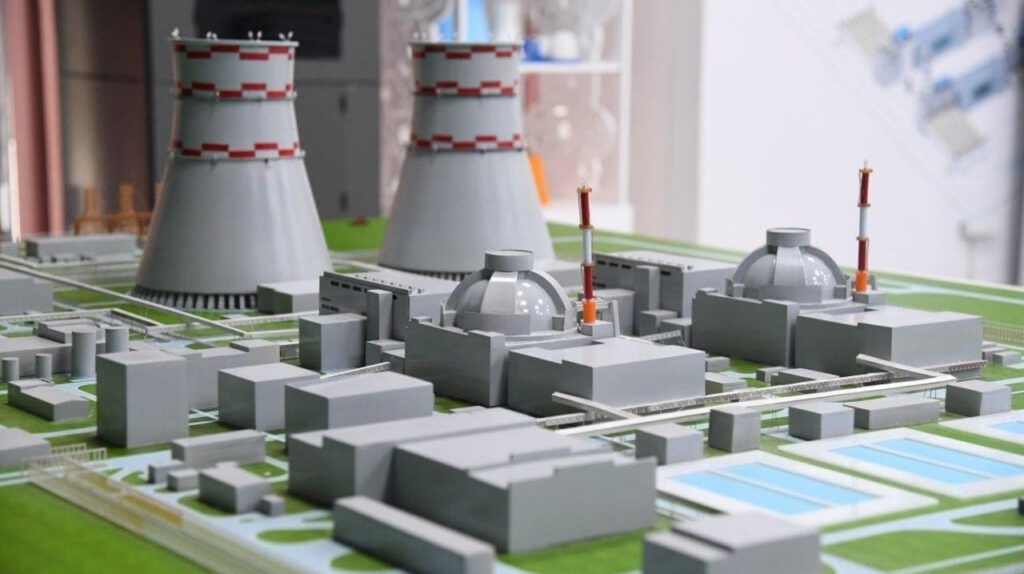UZBEKISTAN HARNESSING THE POWER OF NUCLEAR
The power and potential of nuclear has been evident for decades, even if it has often come surrounded in warnings and threats of misuse by both state actors and terrorists alike. Now, Uzbekistan has announced that it is joining the race and Uzbekistan’s Nuclear Energy Agency (Uzatom) has boldly announced that the first reactor of a small nuclear power plant (NPP) is to be built in Uzbekistan within five years. The location of this new energy source? A site near lake Tuzkan in the Farish district of the Jizzakh region, replacing what was previously to be a larger scale and more conventional nuclear power station.

Uzatom has refused to divulge the cost of this exciting new initiative, but has stated that it will have six pressurized water reactors (PWRs) RITM-200N with a total capacity of 330 MW (55 MW each). Each reactor will com on stream in six month stages, meaning that the station should be fully commissioned by 2032. More significantly, perhaps, Russia’s Rosatom will be the general contractor, with the agreement signed to coincide with Vladimir Putin’s visit to Tashkent on 27th May. It is understood a key part of the deal will enable Uzbekistan companies to be involved in the construction so as to ensure knowledge transfer and learning. The fact that the Jizzakh region will host this groundbreaking new potential power form is significant and a testament to its importance in the Uzbek economy.
Such small rector’s are fast becoming a key new power source for localising nuclear energy and reducing risks.With a maximum output of 300 Megawatt electric (MWe) each can produce 7.2 million kWh per day. By comparison, large-size nuclear power plants have an output of over 1,000 MWe and can produce 24 million kWh per day.
They can, however be built in varying sizes and use a range of possible coolants including light water, liquid metal or molten salt, depending on the technology. The aim is to use nuclear fission reactions to generate heat that can be used directly or for generating electricity.
Critically,the economics and business case of SMRs are different from traditional nuclear power plants. They are typically viewed as a helping part of the decarbonisation pictures as they can increase the stability of the electric grid, especially where increasing renewable sources are feeding intermittently into it. Of particular importance is their small size, meaning that there are more suitable sites which require both less space and less cooling water. And, as in the case of the Jizzakh plant, they are modular in nature and can be produced in series which allows for both production and installation cost efficiency and economies of scale.
Understandably, not everyone is convinced. Having small amounts of radioactive material in many locations begs the question as to whether proper safeguards and vigilance will be put in place. There is the obvious terrorist threat, but people also fear that their backyards will e turned into potential Chernobyl disaster zones in the blink of an eye. Fortunately the technology is not new and these reactors are already harnessing the operating experience of large reactors and small scale reactors already in place in nuclear submarines, for example. The small reactors’ inherent safety systems offer a simpler design and a reactor core with lower ore power and larger fractions of coolant which increases the time to react for operators in case of incidents or accidents. These inherent safety systems also allow elimination of a range of components, valves, safety grade pumps, pipes and cables limiting de facto the risk of their failure.
Globally, there are more than eight such small reactor designs in play, with many at different stages of development across 18 countries. While countries such as the U.S., UK, Japan, and the South Korea are actively developing home grown designs, Russia and China connected their first small reactors to the grid in 2019 and 2021, respectively. Attention has been focuses following the Ukraine crisis meaning governments, like that in Uzbekistan, now see such technology as a growing part of the country;s core energy independence.
By Nick Rowan
